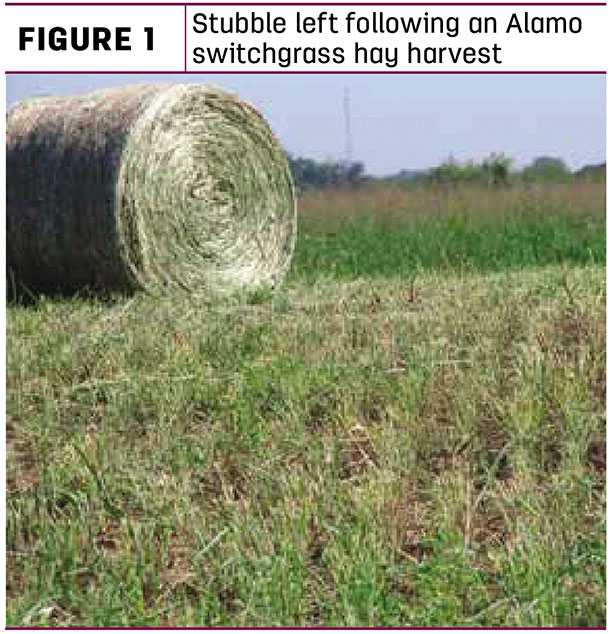
A target stubble height of 8 inches (minimum 6 inches) is recommended for these tall-growing grasses (see SP 731-D: “Producing Hay from Native Warm-Season Grasses in the Mid-South” for additional information on this subject).
Why is cutting height important?
Lower harvest heights can reduce plant vigor by removing all leaf surface area, as well as the growing point. This forces the plant to draw energy from root reserves and, at the same time, lose growth potential until adequate refoliation has occurred and photosynthesis can resume at a rate great enough to support plant growth (Figure 2).
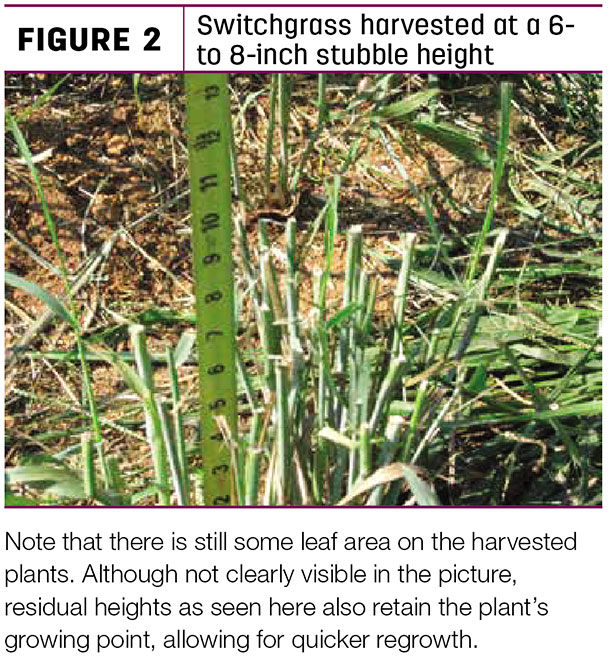
Because of these increased energy demands on the plant, maintaining adequate cutting height is especially important in management scenarios where multiple cuts are made during a single growing season. Additionally, taller stubble provides the benefit of suspending the windrow above the ground, thus increasing air flow and decreasing curing time.
A second issue with low cutting heights is the stubble and potential for tire damage. In biomass production, the single annual harvest taken after a frost leaves stubble from large stems that have grown all season; this stubble, if cut at heights less than 8 inches, can be quite stiff and will not flex as tires cross it, resulting in an increased risk of tire damage.
Leaving taller stubble allows for an increased angle of contact between coarse stems and tires, resulting in minimal risk of tire damage. Because hay harvests occur during summer before plants become stemmy, stubble is not coarse and tire damage is not an issue.
How can I cut that high?
Mowers and mower-conditioners currently produced by equipment manufacturers are typically equipped to cut cool-season grasses, alfalfa and other forages where shorter cutting heights (less than 6 inches) are acceptable. Depending on the make and model of machine, several methods can be employed to obtain higher cutting heights for producers harvesting switchgrass or other native warm-season grasses.
Regardless of which approach you choose to use, always check cutting height with a tape measure in the field after cutting a small swath. This will ensure your adjustments are achieving the desired results.
Stroke-limiting collars
The first method for achieving higher cutting heights is through the use of stroke-limiting collars placed on the cutterbar lift cylinders (Figure 3).
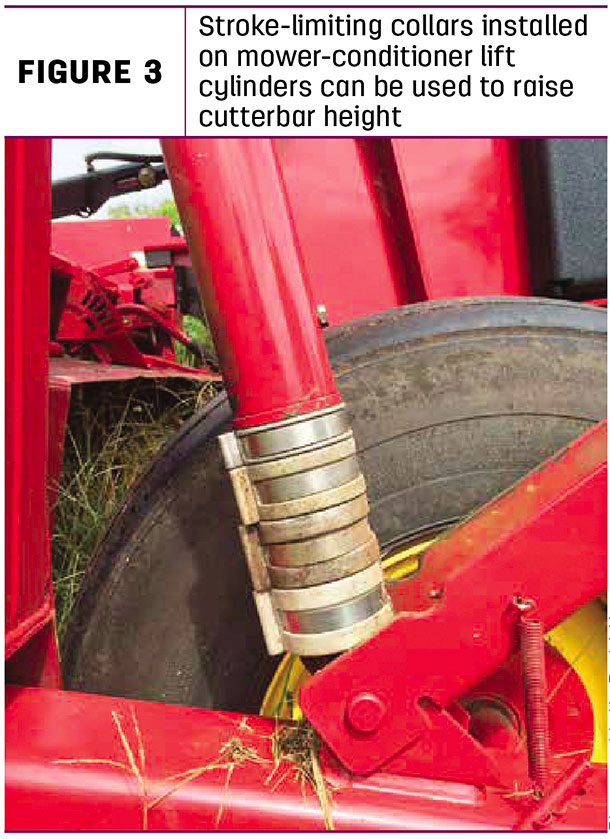
Special note should be made: This method is limited to pull-type mower-conditioners where the cutterbar is suspended from the mower frame. Achieving the desired cutting height may be a trial-and-error process to determine the number and thickness of collars required. Special attention should be paid to the diameter of hydraulic cylinder rods when purchasing collars. Collars should fit to close completely and snugly around the cylinder rod.
Note: Certain makes and models of mower-conditioners (e.g., New Holland) have two differently sized cylinders, necessitating two collar sizes.
High-clearance skid shoes
The second method for achieving greater cutting heights is through the installation of high-clearance skid shoes under all or a portion of the mower cutterbar (Figure 4).
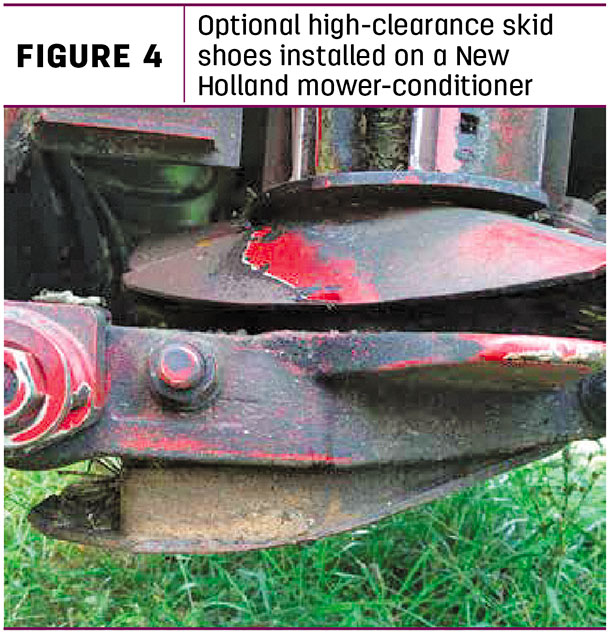
Some manufacturers (e.g., AGCO, New Holland) offer high-clearance shoes available as an option through the dealership parts supply.
It is also possible, given appropriate time and skill, to fabricate skid shoes that will increase cutterbar clearance (Figure 5).

If considering this option, note there is potential for increased implement side drift, especially when mowing steeper terrain. High-clearance skid shoes can increase implement drag in some instances and may cause the mower to not trail properly behind the tractor.
Adjust existing skid shoes
The third option for achieving higher cutting heights is through the adjustment of existing cutterbar skid shoes. Some manufacturers (e.g., John Deere) include adjustments on the standard mower skid shoes that will allow cutting heights greater than 6 inches to be achieved (Figure 6).
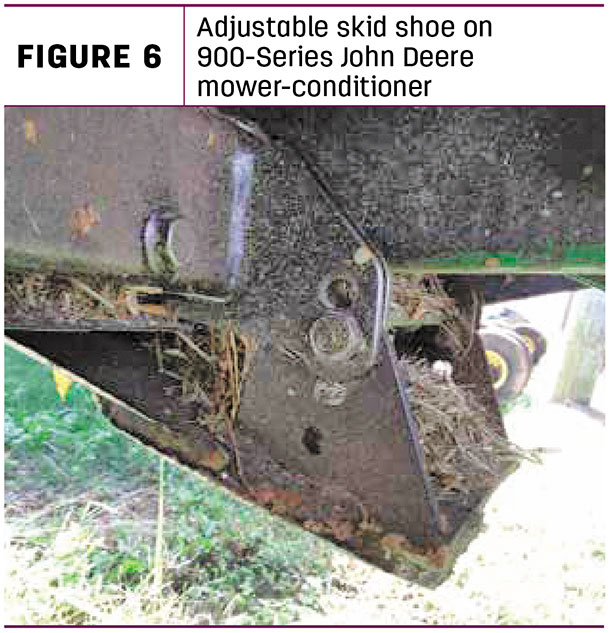
Consult your owners manual to determine if your mower has this capability. For some models of mowers, it may be necessary to purchase spacers to lower existing skid shoes (Figure 7).
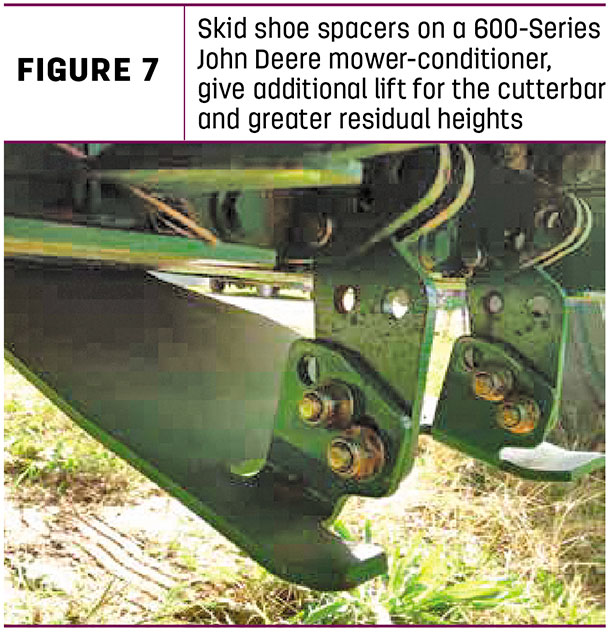
Adjust cutterbar angle
When trying to achieve increased cutting height, also consider the cutterbar angle. Consult your owners manual to determine the procedure to adjust cutterbar angle (Figure 8).
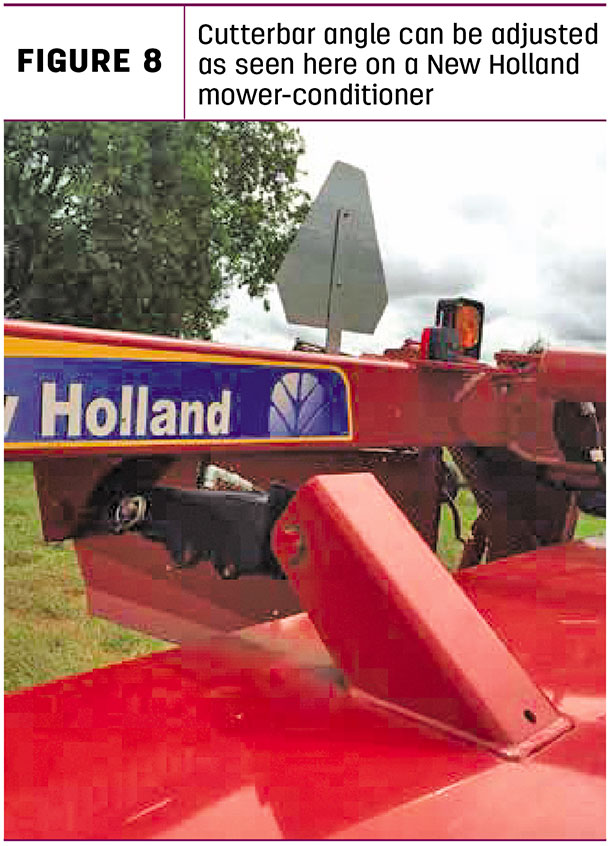
Raising the front of the cutterbar may provide some additional clearance. Note that changing the cutterbar angle may affect performance of the cutterbar, as well as the conditioning system in the case of mower-conditioners.
If installed and adjusted properly, any of the methods described here will provide increased cutting heights without affecting the performance or durability of the mower-conditioner. The increased cutting height will help ensure the longevity and vigor of your switchgrass or other native grass stand, can help reduce weed encroachment and will not negatively affect harvest yields.
Safety
Regardless of which of these approaches you choose, always observe appropriate safety practices when working on or around mowers or mower-conditioners. Never adjust a piece of machinery while the tractor or power unit engine is running and always engage all hydraulic safety locks. Consult your owners manual prior to making any adjustments. ![]()
PHOTOS: Photos provided by Patrick Keyser.
Jonathan Walton is a lecturer with the University of Tennessee Department of Agricultural and Resource Economics.
—Excerpts from University of Tennessee Extension newsletter

-
Patrick Keyser
- Professor
- Director – Center for Native Grasslands Management
- University of Tennessee Institute of Agriculture
- Email Patrick Keyser









